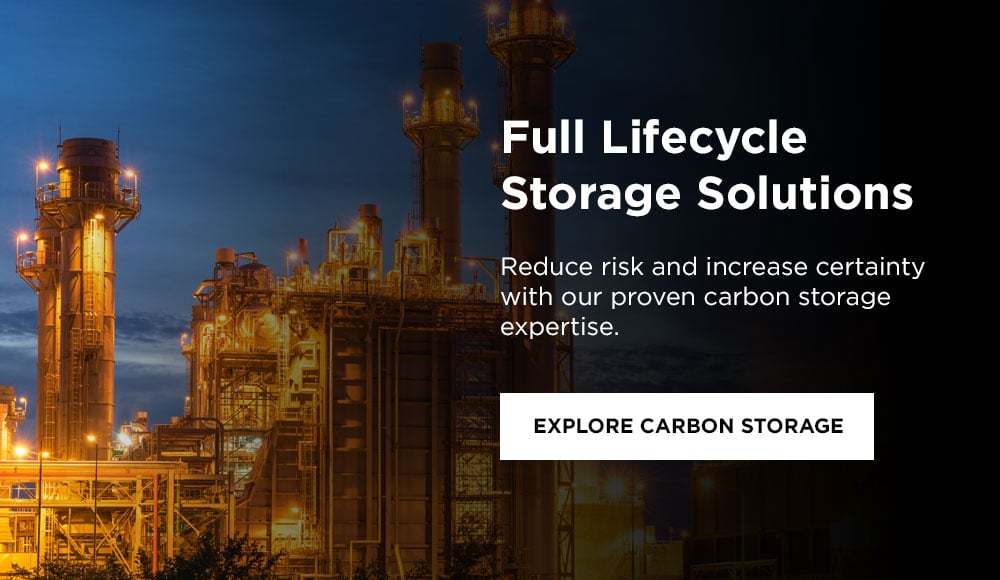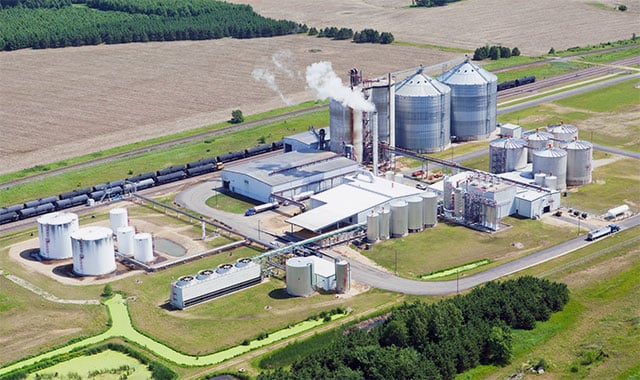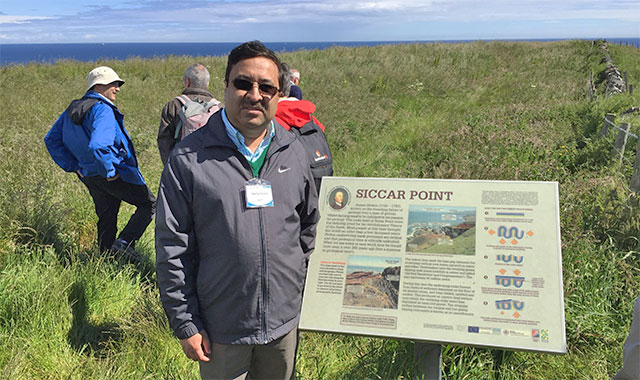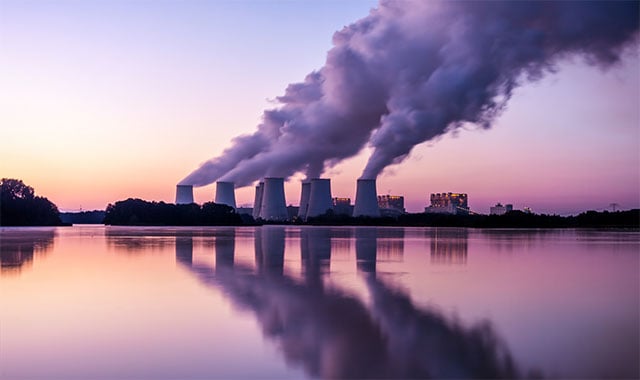A Roadmap to CCS Success

Want to learn more about CCS? Get answers direct from our experts on our CCS FAQs page.
6 Steps to Successful CCS
A CCS program has several steps, each with its own costs and timelines. This six-step phased approach will reduce risk and ensure a successful project.Step 1: Feasibility: The initial feasibility study includes an assessment of local geology, laws, regulations, and economic factors to see if carbon storage is a viable option for the producer—technically, legally and economically.
-
Time to Complete: About 3 months
Is a feasibility study the next step for your site? Find out with a no-cost Carbon Storage Assessment.
Step 2: Modeling: If the initial feasibility data looks good, additional assessment and planning is needed. This phase includes conceptual modeling and simulation and planning for additional data collection, characterization, permitting and regulatory compliance.
-
Time to Complete: About 6 months
Step 3: Site Characterization: Physical characterization of the proposed storage site involves drilling a characterization well for collection of geologic data. This data is used to prove and build out conceptual models and simulations, and file for necessary permits. During this time, plans for construction, implementation and baseline monitoring are completed, facilitating a Final Investment Decision (FID).
-
Time to Complete: About 1 year
Step 4: Construction: With a positive FID in hand, this phase includes construction of the carbon capture infrastructure and any necessary transportation lines, as well as drilling of injection and monitoring wells, along with locking in the Monitoring, Reporting and Verification (MRV) Plan.
-
Time to Complete: About 2 years
Step 5: Operations and Maintenance: This is the stage where monetization of captured carbon begins, thanks to federal 45Q tax credits.
-
Time of Operation: Typically 10 to 30+ years before reaching capacity
Step 6: Post-Injection Monitoring and Closure: Once the storage site is at full capacity, the injection facility is decommissioned, and the well is closed and plugged for permanent storage of the injected carbon.
-
Time to Meet Regulations: EPA requires post-injection monitoring and reporting for 10 years after the well is closed.

Getting Started: CCS Funding Options
Looking at the timeline above, you may have noticed a potential roadblock: initial investments for the first three phases of the CCS project must be made before plant owners begin monetizing their CO2 emissions. So where do you come up with the initial investment capital to cover the costs of the development phase of the project?
Self-funding is always an option for companies, however liquid capital is not always available, and if it is, might preferably be applied to product-focused projects. There are other options that make the economics of CCS more attractive and viable for many plant owners.
Investment Funds: There are several investment funds that focus on investing in technologies to decarbonize the fossil fuel sector. These funds are willing to take on some of the initial risk of early-phase CCS investment.
Tax Equity: In many cases, a plant that can generate 45Q federal tax credits will not have enough tax liability to fully take advantage of them. Several will recognize value simply from a reduction in Carbon Intensity score, but the costs for construction and operation cause the payoff to be too distant in the future. Corporate taxpayers (such as large banks and insurance companies) have for years sought opportunities to reduce their tax burden, so they invest in qualified tax credit projects. Solar and wind infrastructure construction has benefited from tax equity investments for decades, and CCS now has the opportunity to maximize value through 45Q tax credits. By providing the infusion of capital to fund a project in exchange for a share of the federal tax credits, investors can get value for their tax liability and allow plants to reap other benefits sooner.

Reducing the Risk of CCS Investment
The phased approach to CCS is all about reducing risk for plant owners and their investors. The feasibility study is a relatively fast and low-cost way to determine whether or not additional funding is justified to move into full assessment, planning and characterization. Along the way, “go/no-go” points are built in to minimize the risk as the investment requirements increase.
Partnering with Battelle for your CCS program is another way to reduce risk – especially during the construction, operation and decommissioning phases. We have been working on CCS projects continually, and independent of commodity markets for more than two decades. Battelle is considered a pioneer not only in research and development, but also in deployment. The goal of Battelle’s commercial unit is to leverage experience large government-sponsored R&D projects, including the Mountaineer Pilot Project, the MRCSP EOR Partnership and the CarbonSAFE initiative, to benefit industry – specifically our commercial clientele.
Recently finalized guidance on the 45Q tax legislation indicates that those interested in earning 45Q tax credits must begin construction by Jan. 1, 2026. By starting the journey now, there is adequate time to properly and thoroughly complete the assessment, modeling, characterization and financing of your project.
About the Author
Jon Cartlidge, Battelle Commercial Sales Director, is responsible for growing Battelle’s contract research business throughout the energy sector. In addition to ethanol and other renewable fuel producers, Jon has developed relationships with carbon capture technology providers as well as financial institutions. By doing so, Jon hopes that Battelle can contribute to the success of as many CCS projects as possible.
Related Blogs
BATTELLE UPDATES
Receive updates from Battelle for an all-access pass to the incredible work of Battelle researchers.







